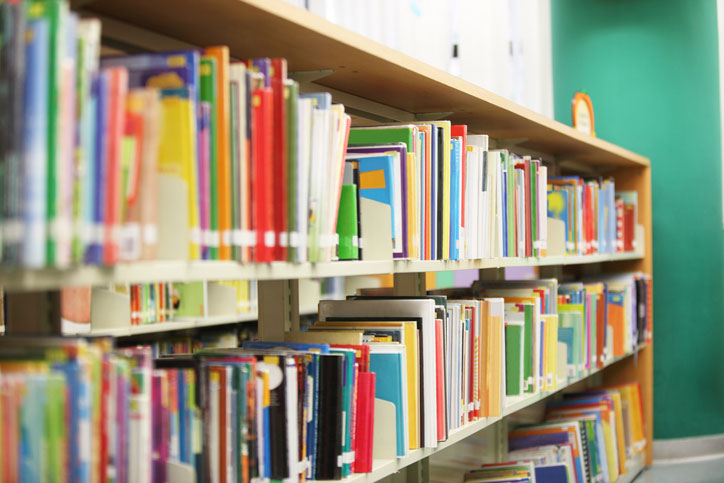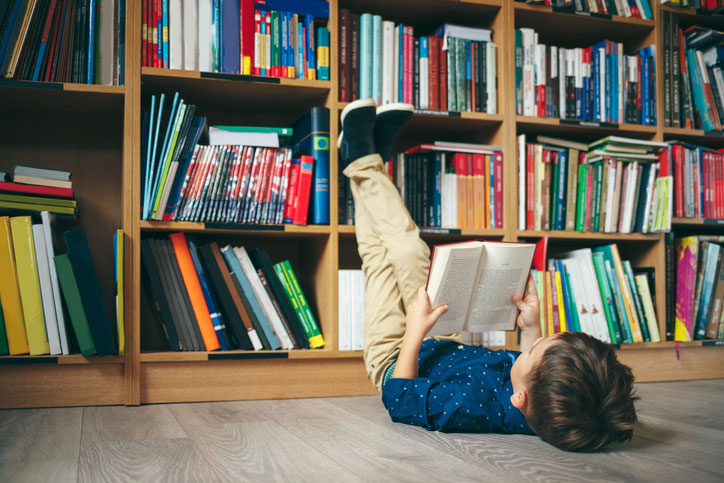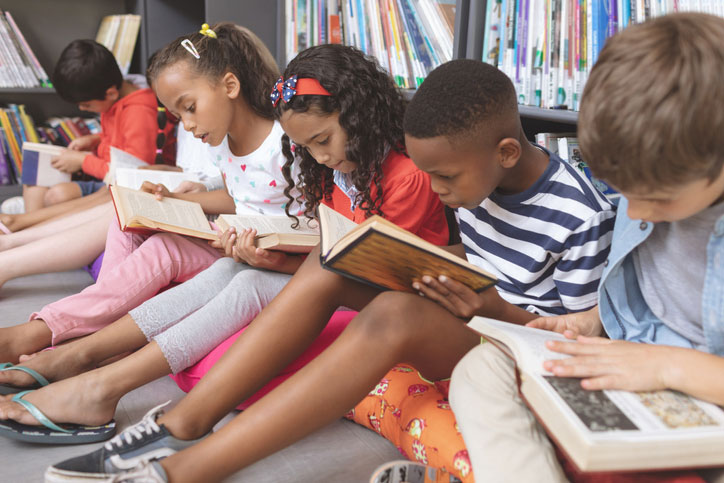Classroom Libraries: Fostering a Love of Reading
 For those of us who love reading, many have fond memories of perusing the bookshelves of our childhood classrooms to track down our next adventure. For young students, the classroom library can be a perfect introduction to a world of wonder and a lifelong relationship with reading.
For those of us who love reading, many have fond memories of perusing the bookshelves of our childhood classrooms to track down our next adventure. For young students, the classroom library can be a perfect introduction to a world of wonder and a lifelong relationship with reading.
Even more importantly, the classroom library serves a crucial role in student development, providing necessary resources to build and maintain literacy levels. The US Department of Education doesn’t mince words about it: children who have access to print reading materials have better literacy outcomes.
In the digital age, some have speculated that libraries would become obsolete, giving way to the resources available at one’s fingertips. The classroom library is the perfect rebuttal, offering students an experience of hands-on engagement that is still unrivaled by digital alternatives.
The Importance of Classroom Libraries
For students at all grade levels, easy access to books is a critical aspect of literacy development and academic achievement. This is why classroom libraries – which at their best provide a wide variety of reading materials to students – are an indispensable resource that are worth careful consideration by teachers.
The benefits of a classroom library are numerous, including:
- Raising literacy levels
- Providing access to books to low-income students
- Offering materials in topics outside of a class’ curriculum
- Helping teachers address the needs of students at all reading levels
There’s no doubt that having books in the classroom is a game-changing factor in many students’ academic development.
Providing Equal Access to All Students
Sadly, many schools are unable to invest a sizable amount of their resources in classroom libraries. At the same time, numerous studies have shown that access to books is a key factor in developing literacy and overall academic motivation. Research by Dr. Richard Allington shows that students who regularly read a book of their choosing gain measurable levels of reading achievement, while students who do not can easily plateau or even lose ground in their skill development. While there are some students who simply are resistant to reading regardless of the availability of books, the common factor that defines students’ reading levels is accessibility.
Indeed, access to books is often determined along poverty lines, meaning that children whose families have the means to buy books have a significantly higher likelihood of achieving literacy and developing key academic skills. For students whose families can’t afford books – which includes far too many students in the United States – classroom libraries are an absolutely vital resource to ensure that they have the same access to reading materials.
More Reading Options, More Readers
Beyond merely offering the books that students are required to read in school, good classroom libraries offer a huge number of reading materials that give students options of what they read.
It’s when students find books that speak to their particular interests and perspectives that a true love of reading begins.
Indeed, many experts, including the National Council of Teachers of English, have found a large variety of reading options to be a crucial factor in building literacy in children, as different students gravitate toward extremely different subjects, genres, and reading levels. This last factor – a variety of literacy levels – is the most practical consideration of all, as students who struggle with reading will need material that they can keep up with.

How Librarians Help Teachers
Creating a classroom library is an important and oftentimes difficult job. While many teachers take responsibility for creating their own classroom libraries, school librarians can be a tremendous resource in building a library that is complete, useful, and well-organized to accommodate the needs of many students. A report by School Library Research, a government agency, explaining that teachers and librarians who collaborate in the long term are highly effective at helping students meet and exceed goals.
As authorities on the reading materials that are available to students, librarians can recommend books that align with a class’ curriculum. They can also help bring in a diversity of reading materials to provide options for students at all reading levels. It can be hard to know how to level books for a classroom library, and many teachers are stretched too thin to assess a large number of books on their own.
Finally, librarians can also provide hands-on instruction and book recommendations to students, easing the strain on teachers and providing the assistance of a literacy and research expert. Many teachers do not take advantage of the resource that school librarians offer, but their role is critical and can be invaluable to teachers, students, and schools alike.
How to Organize a Classroom Library
A well-organized classroom library can be tremendously impactful in supporting student reading and ultimately saving teachers time and effort. The make-or-break factor is how your classroom library is organized. With a methodical and considerate approach to designing your library, you’ll be able to get the most out of it, setting yourself and your students up for success in the long run.

Functionality First
The most crucial quality of a classroom library is that it is actually used. Far too many classroom libraries – including very carefully considered collections – are simply overlooked by students. This can be because they are not built into class curriculum or because of more surprising logistical factors like location or use of organizing systems that obscure the contents of the library.
It’s important that a classroom library is inviting and approachable to students to encourage easy engagement. And while it may sound like a minor factor, if students aren’t able to easily peruse the shelves of a classroom library, they probably won’t.
It’s far more important that your classroom library be easy to use than pretty.
For those whose classrooms allow it, it’s also helpful for your library to be in a location that you and your students frequent rather than tucked away in a forgotten corner. Positioning your library centrally within your classroom and making its appealing books visible to students will boost their interest in reading independently – and may also serve as a reminder to you to make use of your collection. The same goes for an attractive setting: if your library is pleasant, both you and your students will be inclined to use it more.
Though it might sound daunting to create a classroom library from scratch, teachers and librarians who are building from the ground up have the opportunity to think through these considerations at the outset to avoid troubleshooting or reorganizing down the line.
Stocking Your Classroom Library
If you are on day one of building up your classroom library, or if you have decided to expand it, it’s good to have variety and sheer quantity in mind. As Scholastic reports, a collection of 300-600 books is recommended for the average classroom depending on grade level and copies of each title.
Beyond a variety of genres, it’s also important that your library provides a diversity of perspectives to engage readers of all backgrounds. By making your library as inclusive as possible, you’ll be showing students that reading opens up a world that welcomes all.
Quality is also a crucial factor to take into consideration: young readers are discerning, and if you don’t think the book is good, they probably won’t either. It’s also important that books be in good condition, as many students – especially those who are reluctant readers in the first place – will be put off by books that don’t feel fresh.
Organizing Your Classroom Library for a Variety of Readers
Functionality considerations also extend to how your library is organized. While there is no one way to organize a classroom library, there are a few popular approaches:
Organizing by Reading Level
It can be helpful to mark books by reading level so that students can quickly find books that are actually accessible to them. Inversely, it can be quite discouraging for students to pick up books that are beyond their skill level. A classroom library organized by reading level is an especially good option if your classroom has students whose literacy levels vary dramatically.
Organizing by Genre
Organizing by genre can be a great way of engaging students by helping them discover more of what they love. Once you select the different categories you’ll use for your library, it’s easy to devise a stickering system that leads students instantly to their favorite genre. Popular genres for students at all grade levels include:
- Fantasy
- Historical fiction
- Sci-Fi
- Nonfiction
- Graphic novels
By discovering new books that speak to their interests, students are more likely to continue reading, further developing literacy skills and an overall love of books.
Whatever you choose, it is important that you devise a classroom library organization system that is coherent and accessible. Some students find reading to be an arduous process; picking out a book should not be.
Becoming a School Librarian
School librarians are highly impactful figures whose knowledge and perspective can deeply enrich students’ literacy and overall love of reading. They are also invaluable resources to teachers and schools overall. For those who are ready to take next steps toward becoming a librarian, take a look at our list of the country’s best online Master’s in Library Science programs.



